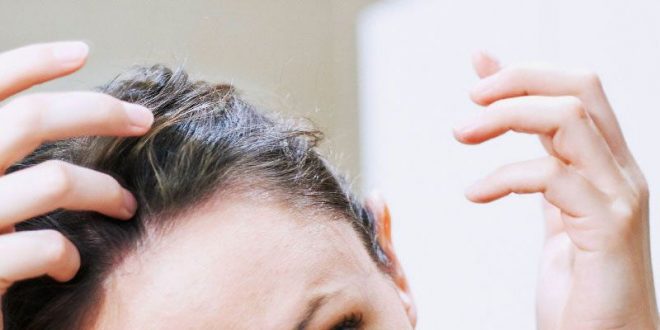Hair loss (or alopecia) in trans women is normally associated with the normal pattern of balding seen in men–the variety of receding hair line and balding patterns prior to the use of female hormones. Baldness in men is not a disease, but rather the body’s reaction to the male hormones (androgens) in genetically predisposed individuals.
However, a smaller but still significant percentage of transgender women (prior to hormone treatment) suffer from female pattern thinning and balding. This condition isn’t often mentioned. The condition is also more prevalent in genetic women than one may realize since many women use concealing hairstyles, wigs and hair enhancements as a means of concealing the problem. About 15% of genetic women experience some degree of noticeable hair loss.
However, the female-type symptoms are usually quite different from those of the male-type. In women, the frontal hairline often remains intact, as do the sides and very back of the hair. However, the hair all over the top of the head and towards the back gets thinner and thinner. This type of hair thinning rarely continues to the ‘shiny-type’ of balding. When an increased amount of androgens are present in women, this distinct pattern of central scalp hair thinning is called adrenal androgenetic female-pattern alopecia.
Studies have now shown hair density (the number of hairs within a given area) has to have decreased below 50% before the loss can be visually detected. Thinning hair is not related only to the loss of the follicles themselves. Thinning also becomes more noticeable as the diameter of the hair shafts decreases. A lot of the look and feel (thickness and fullness) of hair is due to the caliber (diameter) and curl of the hair, not only the number of hairs. One of the best ways to determine the thickness and fullness of hair is to evaluate the part. The part generally grows wider as the hair thins. Fortunately, female-type thinning and balding is usually largely or completely reversible in a matter of one to two years duration with administration of female hormone therapy (which includes anti-androgens).
While male-pattern balding is generally corrected with similar hormone therapies, the reversal process is usually in the area of three to five years, and often requires some hair transplantation. Provided significant re-growth occurs, the only transplantation usually required to create a natural appearance would be tiny follicular grafts of one, two and three hairs. Topical medication also provides an effective means of rejuvenating hair growth.
Topical minoxidil (Rogaine) was approved for the treatment of male-pattern baldness in 1988. While we find it to be only minimally effective means of stimulating hair growth in the absence of hormonal/anti-androgen therapies, it proves to be a very effective adjunct to hormone therapy.
Source: Transgender Care
 Lesbian, Gay, Bisexual, Transgender & Intersex News Lesbian News, Gay News, Bisexual News, Transgender News, Intersex News, LGBTI News
Lesbian, Gay, Bisexual, Transgender & Intersex News Lesbian News, Gay News, Bisexual News, Transgender News, Intersex News, LGBTI News




